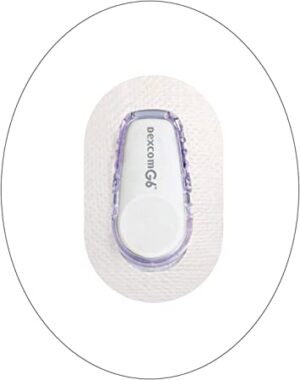Keeping your blood sugar levels within a healthy range is crucial for managing diabetes. High blood sugar levels can lead to a range of health problems, including nerve damage, kidney disease, and cardiovascular complications. To keep blood sugar levels in check, it is essential to monitor them regularly using diabetic testing equipment.
Diabetic testing equipment includes glucose meters, test strips, lancets, and lancing devices. These devices allow people with diabetes to measure their blood sugar levels and adjust their treatment plans accordingly. Regular testing can help identify fluctuations in blood sugar levels and provide insight into how lifestyle changes, medications, and other factors affect glucose levels.
Advancements in diabetic testing equipment have made it easier and more convenient for people with diabetes to monitor their blood sugar levels. Some devices now offer features like Bluetooth connectivity, continuous glucose monitoring, and automatic data syncing with mobile apps.
Understanding the Basics of Diabetic Testing Equipment
For people living with diabetes, diabetic testing equipment is a vital tool for monitoring and managing blood sugar levels. With the help of diabetic testing equipment, people with diabetes can accurately measure their blood sugar levels and adjust their treatment plans accordingly. Understanding the basics of diabetic testing equipment is essential for effectively managing diabetes.
Diabetic testing equipment includes devices like glucose meters, test strips, lancets, and lancing devices. These tools allow individuals to measure their blood sugar levels and provide valuable information about their glucose levels throughout the day. It’s essential to use this equipment correctly and to maintain it properly to ensure accurate readings.
In recent years, there have been significant advancements in diabetic testing equipment, making it easier and more convenient for people with diabetes to monitor their blood sugar levels. Continuous glucose monitoring (CGM) systems and flash glucose monitoring devices are examples of the latest technologies that have revolutionized diabetic testing. These devices provide continuous blood glucose readings and alerts, making it easier for people with diabetes to manage their condition.
In recent years, there have been significant advancements in diabetic testing equipment, making it easier and more convenient for people with diabetes to monitor their blood sugar levels. Continuous glucose monitoring (CGM) systems and flash glucose monitoring devices are examples of the latest technologies that have revolutionized diabetic testing. These devices provide continuous blood glucose readings and alerts, making it easier for people with diabetes to manage their condition.
Benefits of Regular Testing
Regular testing of blood sugar levels is an essential aspect of managing diabetes. There are several benefits of regular testing that can help people with diabetes maintain their health and well-being.
Firstly, regular testing provides valuable information about blood sugar levels throughout the day, allowing people with diabetes to make informed decisions about their treatment plans. Testing before and after meals, exercise, and other activities can help identify how lifestyle changes and medications affect blood sugar levels.
Secondly, regular testing can help prevent complications related to high blood sugar levels. People with diabetes can take action to prevent and manage hypoglycemia and hyperglycemia, which can lead to dangerous complications like seizures, diabetic coma, and even death.
Thirdly, regular testing can help individuals with diabetes to feel more in control of their condition. By tracking blood sugar levels and identifying patterns, they can make informed decisions about their diet, exercise, and medication, leading to better management of their condition and improved quality of life.
Different Types of Testing
Diabetes is a chronic condition that requires continuous monitoring and management to ensure good health. Testing equipment plays a crucial role in managing diabetes effectively. Different levels of testing are necessary to assess blood glucose levels accurately and make appropriate decisions.
The first level of testing is self-monitoring of blood glucose levels using a glucometer. This involves pricking the finger and placing a drop of blood on a test strip, which is inserted into a device. The second level of testing is hemoglobin A1C (HbA1c) testing, which measures average blood glucose levels for three months. A healthcare professional conducts this test to obtain a more comprehensive understanding of blood glucose regulation.
The third level of testing is continuous glucose monitoring, which involves a sensor placed under the skin to measure glucose levels continuously. This provides real-time data to make immediate adjustments in insulin dosage or diet. These different levels of testing are critical in managing diabetes and ensuring optimal health outcomes.
Choosing the Right Equipment
When it comes to managing diabetes, choosing the right testing equipment is crucial for accurate results and effective management. The first step in selecting the right equipment is to consult with a healthcare provider to determine which equipment is best suited for individual needs. Factors such as age, lifestyle, and medical history can influence the type of equipment recommended. For example, some individuals may prefer a device that requires a minimal blood samples, while others may prioritize a device that provides real-time continuous monitoring.
Cost is another important factor to consider, as some equipment may be more expensive than others. It is essential to find a balance between cost and effectiveness to ensure that the chosen equipment fits within the budget and meets individual needs. Additionally, it is important to select a reliable brand and conduct research on customer reviews to ensure that the chosen equipment is durable and accurate. With the right equipment, individuals with diabetes can manage their condition effectively and live a healthy, fulfilling life.
Maintenance and Troubleshooting Tips
Proper maintenance and troubleshooting are essential for ensuring the accuracy and effectiveness of diabetic testing equipment. Regular maintenance can prolong the life of the equipment and prevent malfunctions that can lead to inaccurate results. One important maintenance tip is to clean the equipment regularly using a soft, damp cloth and to avoid using harsh chemicals or abrasive materials.
Additionally, it is important to follow the manufacturer’s instructions for storing the equipment, replacing batteries, and disposing of used test strips. Troubleshooting can help to identify and resolve any issues with the equipment. Common troubleshooting tips include ensuring that the equipment is properly calibrated, ensuring that the test strips are not expired or damaged, and ensuring that the device is not stored in extreme temperatures. If issues persist, it is recommended to contact the manufacturer or a healthcare provider for further assistance. By following these maintenance and troubleshooting tips, individuals can ensure that their diabetic testing equipment is reliable, accurate, and effective in managing their condition.
Staying on Top of Your Blood Sugar Levels
Staying on top of your blood sugar levels is critical for effective diabetes management and good health outcomes. Regular monitoring of blood sugar levels can help to identify any fluctuations or trends that require adjustment in medication, diet, or exercise. It is recommended to test blood sugar levels several times per day, especially before and after meals, and to keep a log of the results. This log can help to identify any patterns or trends that require further attention.
Additionally, it is essential to communicate regularly to a healthcare provider to discuss any concerns or changes in blood sugar levels. This can help to ensure that medications and dosages are appropriate and effective in managing diabetes. Maintaining a healthy lifestyle, including a balanced diet, regular exercise, and stress management, can also help to regulate blood sugar levels. By keeping their blood sugar levels regulated and consulting with their healthcare provider, those with diabetes can effectively manage their condition and ensure their well-being.



